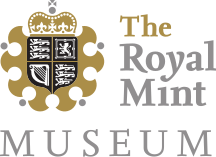
The standard circulating coinage of the United Kingdom, British Crown Dependencies and British Overseas Territories is denominated in pennies and pounds sterling, and ranges in value from one penny sterling to two pounds. Since decimalisation, on 15 February 1971, the pound has been divided into 100 (new) pence. Before decimalisation, twelve pence made a shilling, and twenty shillings made a pound.

The sovereign is a British gold coin with a nominal value of one pound sterling (£1) and contains 0.2354 troy oz of pure gold. Struck since 1817, it was originally a circulating coin that was accepted in Britain and elsewhere in the world; it is now a bullion coin and is sometimes mounted in jewellery. In addition, circulation strikes and proof examples are often collected for their numismatic value. In most recent years, it has borne the design of Saint George and the Dragon on the reverse; the initials of the designer, Benedetto Pistrucci, are visible to the right of the date.

The Royal Mint is the United Kingdom's official maker of British coins. It is currently located in Llantrisant, Wales, where it moved in 1968.

The Royal Canadian Mint is the mint of Canada and a Crown corporation, operating under the Royal Canadian Mint Act. The shares of the Mint are held in trust for the Crown in right of Canada.

The Royal Australian Mint is the territorial country in Australia’s circulating coins and is a Commonwealth Government entity operating within the portfolio of the Treasury. The Mint is situated in the Australian federal capital city of Canberra, in Denison St, in the suburb of Deakin. The Mint was opened in 1965 by Prince Philip, Duke of Edinburgh.
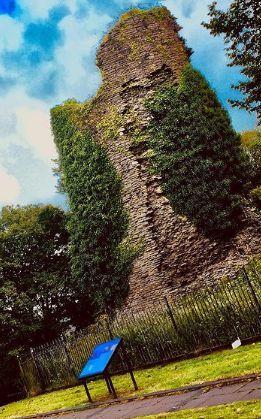
Llantrisant is a town in the county borough of Rhondda Cynon Taf, within the historic county boundaries of Glamorgan, Wales, lying on the River Ely and the Afon Clun. The three saints of the town's name are SS. Illtyd, Gwynno, and Dyfodwg. Llantrisant is a hilltop settlement, at an altitude of 174 m (571 ft) above sea level. The town is home to the Royal Mint.
A branch mint is a satellite operation of (usually) a national mint. In many cases it will add a mint mark to coins that is different from that used at the main facility, although each country has different rules that may vary over time. Added letters are shown below for the United States, France and Switzerland. Because of this difference, coins produced at branch mints may be worth more or less to collectors than those from the main one, depending on their mintages.
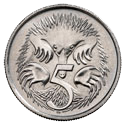
The Australian five-cent coin is the lowest-denomination circulating coin of the decimal Australian dollar introduced in 14 February 1966, replacing the pre-decimal sixpence. It has been the lowest-denomination coin in general circulation since the withdrawal of the one-cent and two-cent coins in 1992.

The Bode Museum, formerly called the Kaiser-Friedrich-Museum, is a listed building on the Museum Island in the historic centre of Berlin. It was built from 1898 to 1904 by order of German Emperor William II according to plans by Ernst von Ihne in Baroque Revival style. The building's front square featured a memorial to German Emperor Frederick III, which was destroyed by the East German authorities. Currently, the Bode-Museum is home to the Skulpturensammlung, the Museum für Byzantinische Kunst and the Münzkabinett. As part of the Museum Island complex, the Bode-Museum was inscribed on the UNESCO World Heritage List in 1999 because of its outstanding architecture and testimony to the development of museums as a cultural phenomenon in the late 19th and early 20th centuries.

Christopher Ironside OBE, FRBS was an English painter and coin designer, particularly known for the reverse sides of the new British coins issued on decimalisation in 1971.

The cent, formally the one-cent coin, was the lowest-denomination coin of the Australian dollar. It was introduced on 14 February 1966 in the decimalisation of Australian currency and was withdrawn from circulation in 1992. It is still minted as a non-circulating coin. A one-cent coin in 1966 would have a purchasing power equal to about 16c in 2023 values.
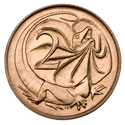
The Australian two-cent coin was introduced in 1966 and was the coin of the second-lowest denomination until it was withdrawn from circulation in 1992. It is still counted as legal tender, but is subject to some restrictions, and two-cent coins are legal tender only up to the sum of 20 cents.

The shilling, informally called a "bob", was a type of silver coinage issued by the Commonwealth of Australia, that circulated prior to the decimalisation of Australian coinage. The Australian shilling was derived from the British pre-decimal sterling pound system and was first issued following the passing of the Australian Coinage Act 1909, which established Australia's first formal currency system. The shilling was issued as part of Australia's silver coinage, which included the two-shilling (florin), the sixpence and the threepence. The shilling was minted from 1910 until 1963. During this period there was one significant modification to the design of the Australian shilling, the change in its reverse design, which occurred in 1938 when the design was altered from the Australian coat of arms (1910–1936) to the visage of a Merino ram's head (1938–1963).
William John Hocking was a British numismatist. He worked at the Royal Mint from 1883 to 1926, beginning as a clerk and retiring as Superintendent of the Mint.
SS Gairsoppa was a British cargo steamship that was built in 1919 and sunk in the Battle of the Atlantic in 1941. 85 of her complement were killed, and only one person survived. When she was sunk, her cargo included 7 million ounces of silver bullion. In 2012 and 2013 a US company recovered part of the bullion, and in 2014 the Royal Mint struck 20,000 silver coins from it.
Samlerhuset Norge is a Norwegian distributor of collectibles, mainly coins and medals, but also stamps, banknotes and philatelic numismatic covers (PNC). Samlerhuset is located in Oppegård, Norway. The company, with the full name Samlerhuset Norge, is part of the Samlerhuset Group B.V., headquartered in Almere, the Netherlands. Samlerhuset was founded in Norway in 1994, and started expanding to several countries in Europe and to China. Samlerhuset Group B.V. now have offices in 16 countries. They cooperate with a number of central banks on commemorative coins and coin collections.

The sovereign was a gold coin of the Kingdom of England first issued in 1489 under King Henry VII. The coin had a nominal value of one pound sterling, or twenty shillings. The sovereign was primarily an official piece of bullion and had no mark of value on its face. Nonetheless, it was the country's first coin to be valued at one pound.
Kevin Clancy is a numismatist and the Director of the Royal Mint Museum. Clancy is also Secretary to the Royal Mint Advisory Committee on the Design of Coins, Medals, Seals and Decorations which advises the British Government and Crown on the designs of coins and similar objects.
Alphonse Michaux (1860–1928) was a Belgian coin engraver and medalist.
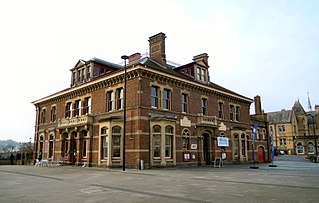
Museum of Barnstaple and North Devon is a local museum covering the history and culture of the North Devon area and which is located in The Square in Barnstaple in Devon. The displays range from prehistoric times to the Victorian era. The building and its garden railings beside the river front have been Grade II listed since 1988.
